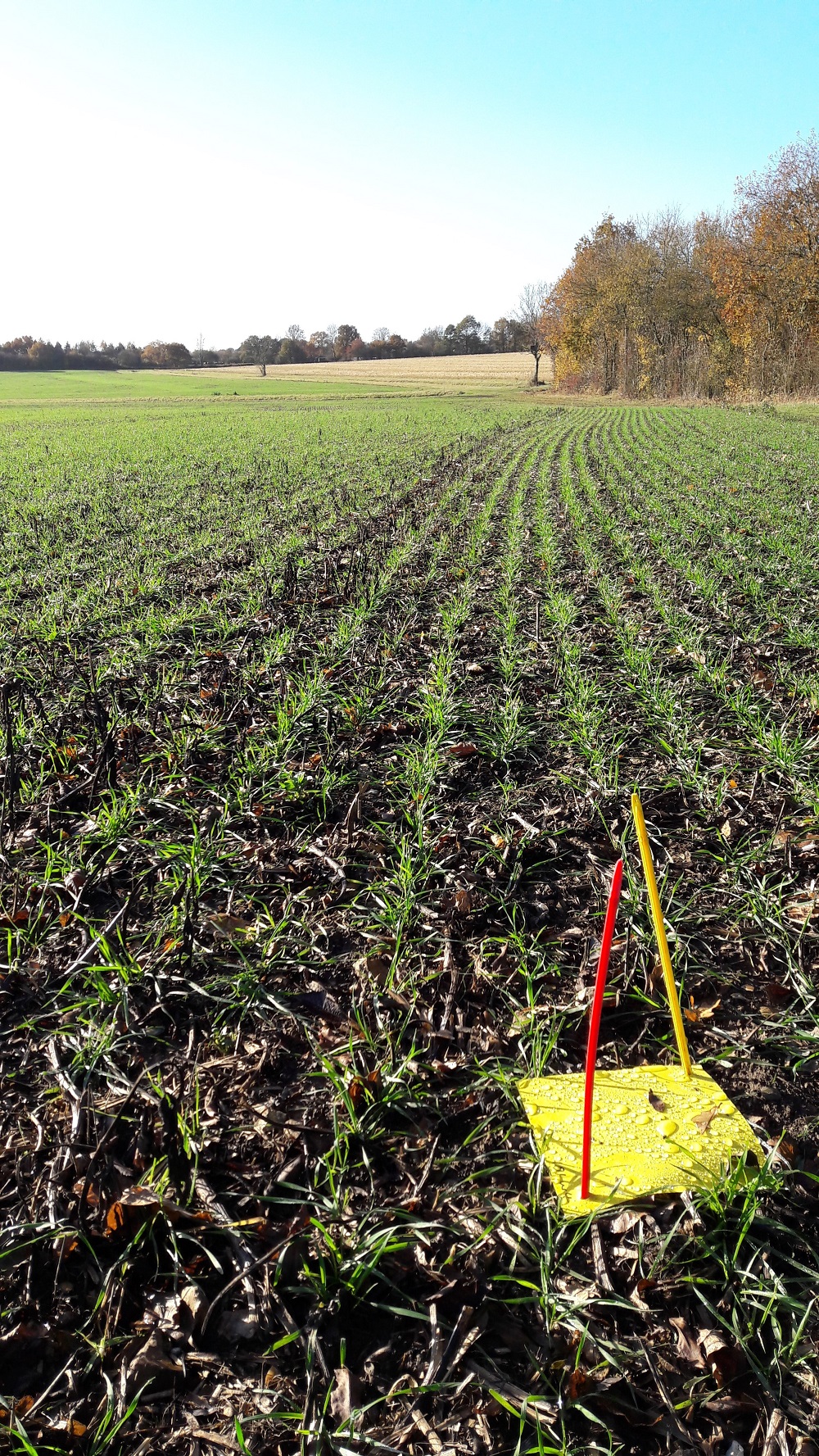- Home
- Knowledge library
- Barley yellow dwarf virus (BYDV) management in cereals
Barley yellow dwarf virus (BYDV) management in cereals
Barley yellow dwarf virus (BYDV) is a yield-robbing disease of UK cereals (wheat, barley, oats, rye and triticale). Learn about the main aphids that spread it and how to manage their levels in crops.
Virus management in cereals and oilseed rape
Why is BYDV such an issue in cereals?
BYDV is the most economically important virus in UK cereals. The scale of yield loss depends on aphid activity, BYDV presence and strain, growth stage at infection and environmental conditions. In the case of severe infections, BYDV can cause losses of up to 60% in winter wheat and 50% in winter barley. However, the occurrence of these loss levels is rare.
How to manage BYDV risks in winter cereals
- Select lower-risk fields, such as fields with a low amount of surrounding grassland
- Encourage natural enemies, such as predatory beetles and web-spinning spiders. Note: these can help control aphid numbers, but may not prevent virus transmission
- Manage ‘green bridges’ that transfer aphids/virus to new crops. For example, wait five weeks before cultivating and sowing, and destroy any weeds – especially annual meadow grass and volunteer cereals
- Note that aphid colonisation is generally lower on fields with minimum tillage (retained straw may also benefit natural enemies)
- Drill crops as late as possible
- Use monitoring tools to assess aphid activity
- Manage aphid colonisation and spread, especially before growth stage 31
- Minimise general stress to plants
- Select BYDV-tolerant varieties, where appropriate
How do aphids spread BYDV?
Although various species of cereal aphid transmit BYDV, two species are particularly important in the UK. In the South, the bird cherry–oat aphid (Rhopalosiphum padi) is the principal vector. In the Midlands and the North, the grain aphid (Sitobion avenae) is usually more important.
As aphids do not pass the virus on to their offspring, they must acquire BYDV through feeding on infected host plants. The time between acquisition and the aphid being able to transmit the infection is 12–48 hours. In addition to feeding on the foliage, aphids can also feed on crop roots, especially in warm, moist conditions.
Initially, only a small proportion of aphids is likely to carry BYDV. However, because of the way in which virus spreads from plants to aphids, even initial small populations of infected aphids can lead to significant economic damage.
BYDV is introduced into cereal crops in two ways:
- Indirect transfer by winged aphids, from grass or volunteer cereals. This is the most common source of BYDV infection.
- Direct transfer by wingless aphids, from grass or on volunteer cereals, that survive cultivation – called the ‘green bridge’ effect.
Infections cause leaf yellowing and stunting. Initially, symptoms are confined to individual plants scattered throughout the crop. Eventually, distinct circular patches develop. Sometimes, these patches can merge to form extensive areas of infected crop. Red tipping of upper leaves can also occur. Very early infections can result in plant death.
BYDV variants/isolates
Barley yellow dwarf virus (BYDV) is a complex of viruses, with variants/isolates categorised according to the aphids initially known to transmit them. For example:
- BYDV-PAV: bird cherry-oat aphid (Rhopalosiphum padi), the grain aphid (Sitobion avenae) and other aphids
- BYDV-RPV: R. padi
- BYDV-MAV: S. avenae
There is now a greater understanding of BYDV variants and many are transmitted by more than one aphid species. However, the original names have been kept.
Related to BYDV, Cereal yellow dwarf virus (CYDV-RPV) is transmitted by R. padi.
BYDV-PAV is considered the most prevalent species, globally.
We provide a regular snapshot of the proportion of virus-carrying cereal aphids (bird cherry–oat and grain aphids). Issued throughout summer (fortnightly) and autumn (weekly), the results are based on (BYDV/CYDV) tests of a small number of aphid samples collected from four suction traps, located across England.
The key BYDV-spreading aphid species
Learn more about the key aphid species that spread BYDV, including their potential to cause direct-feeding damage and the other crops they affect.
Bird cherry–oat aphid (BYDV vector in cereals)
Grain aphid (BYDV vector in cereals)
Varietal resistance/tolerance to BYDV
The use of specialist categories and described types allows the specific recommendation of varieties with novel traits in the AHDB Recommended Lists (RL).
BYDV resistance/tolerance in cereals is a specialist trait recently added to the RL:
- RL 2021/22 – first winter wheat variety added with resistance to BYDV (RGT Wolverine)
- RL 2022/23 – first winter barley variety added with tolerance to BYDV (KWS Feeris)
What is the value of BYDV resistance/tolerance in cereals? (blog)
Aphid monitoring and chemical control
Monitor crops for aphid activity during the autumn using sticky traps (on the soil surface 5 m into the crop) and follow AHDB Aphid News for information on regional aphid activity. As moderate levels of pyrethroid resistance are widespread in grain aphid populations in the UK, it is essential to follow resistance management guidance and to target chemical control carefully.
Insecticide Resistance Action Group
BYDV management tool (use to target chemical control)
BYDV research
 AHDB/Dewar Crop Protection Ltd
AHDB/Dewar Crop Protection Ltd
BYDV management tool
Use this tool to predict when critical second generation aphid offspring are produced

Staying ahead of BYDV
An article from Crop Production Magazine
 Dewar Crop Protection
Dewar Crop Protection
IPM and BYDV webinar
BYDV management from the perspective of a farmer, researcher and breeder
BYDV webinar quick links
Adrian Joynt (farmer): The BYDV challenge – costs and benefits
Tom Pope (researcher): BYDV and IPM – established and novel solutions
Tom Dummett (breeder): Genetic solutions for BYDV
BYDV at the Agronomists' Conference
Latest information on BYDV management and research (Agronomists’ Conference 2021 video)
What is the value of BYDV tolerance/resistance in cereals? (Agronomists’ Conference 2021 video)
 Agrii
Agrii
Yellow sticky traps, positioned on the soil surface 5 m into the crop, are useful for in-field monitoring.

